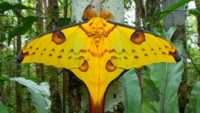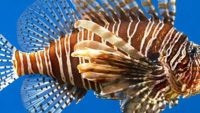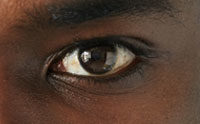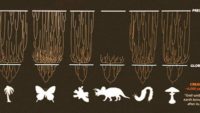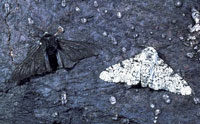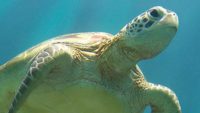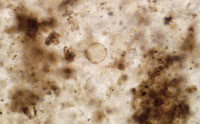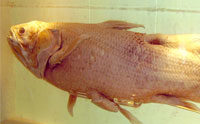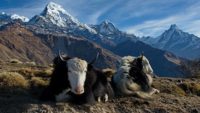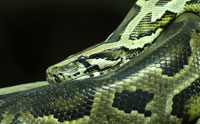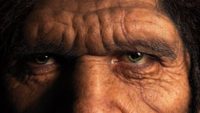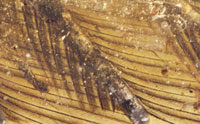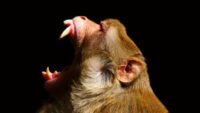By John Wahl The family of giant silk moths, or Saturniidae, includes the largest—and arguably most beautiful—moths in the world. …read more Read more here: AIG Daily
Engineers want to copy the design principles they’re discovering in nature’s flexible defences. …read more Read more here: creation.com
By Dr. David Menton “The hearing ear and the seeing eye, the Lord has made them both” (Proverbs 20:12). …read more Read more here: AIG Daily
By Dr. Elizabeth Mitchell Walking fish, waterfall-climbing cavefish with a tetrapod-like pelvic girdle, and the gene that shapes skates’ gills all supposedly show how legs evolved. …read more Read more here: AIG Daily
Biophysics researchers recently demonstrated that people can see just one photon of light. This led them to ask how evolution could have crafted a visual system sophisticated enough to overcome the overwhelming problem of discerning single photons from the sea of electromagnetic, molecular, and electrochemical “noise” inside a human head. More… …read more Read more here: icr.org
By Dr. Nathaniel T. Jeanson When God created the kinds, He frontloaded them with genetic differences—with the potential to form all sorts of new species and varieties. …read more Read more here: AIG Daily
In England, a population of peppered moths supposedly shifted their coloring from mostly white to mostly black after soot darkened their tree-trunk homes. However, later researchers could not replicate these results. More… …read more Read more here: icr.org
Dinosaurs captivate old and young alike, but why do people think they prove evolution? …read more Read more here: creation.com
By Dr. Elizabeth Mitchell Like children assembling a jigsaw puzzle, evolutionists have long been trying to piece together the mysteries of turtle shell origins. …read more Read more here: AIG Daily
By Creation Moments In the arid desert regions of the southwestern United States lives a creature with so many astonishing abilities, it speaks loud and clear about God’s hand in creation! read more …read more Read more here: Creation Moments
Rock researchers highly regard Ontario’s Gunflint chert for its fresh-looking microfossils. Long ago, the chert’s microcrystalline quartz grains embedded microscopic single-celled creatures, including algae. A research team used new techniques to analyze the chemicals inside these fossil cells. They found protein remnants where they should no longer exist—given these rocks’ vast age assignment. More… …read more Read more here: icr.org
On July 7, BBC News reported the rare discovery of a fossilized sea worm, classified as a hemichordate, a sophisticated invertebrate. Evolutionists are excited because this find supposedly provides insight into early evolution. And some evolutionists even see this worm—called Oesia—as a half-billion-year-old ancestor of man. More… …read more Read more here: icr.org
By Dr. Nathaniel T. Jeanson The major remaining question is how tens of thousands of species could arise in a few thousand years. …read more Read more here: AIG Daily
Mark Carnall at the Oxford University Museum of Natural History recently wrote an article for the U.K. newspaper The Guardian. He argues that we should stop using the term “living fossil.” What does his argument reveal about evolutionary thinking? More… …read more Read more here: icr.org
By Dr. Jean Lightner God designed one mighty beast to thrive in extreme Tibetan conditions. …read more Read more here: AIG Daily
Amazing design allows a tiny, fragile creature to lift objects way beyond its size. …read more Read more here: creation.com
Convergent evolution is the idea that the same trait, or set of traits, in completely different organisms were somehow produced through independent evolutionary processes. Now a new study shows how two different types of snakes have adapted to a diversity of environments by expressing the same traits (skin color and skull shape), but the study describes no mechanism for it. The authors simply attribute the highly repeatable process to the black box of convergent evolution. More… …read more Read more here: icr.org
By Dr. Elizabeth Mitchell Could hobbits be a dwarfed variety of Homo erectus, an archaic human whose presence in Southeast Asia, specifically Flores, has been demonstrated? …read more Read more here: AIG Daily
Newly described bird wings—not just a single feather or a strange-looking fiber or two—rose to the top of a long list of spectacular amber-trapped fossils. Two tiny hatchlings may have seen dinosaurs just before their wings got trapped in fast-flowing tree resin. At least four waves of the magic evolutionary wand would be needed to shove these unique fossils into deep time. More… …read more Read more here: icr.org
By Dr. Andrew Fabich All questions on the origin of life hinge on our understanding of genetics because the first cell couldn’t just form and then die. …read more Read more here: AIG Daily
Design in nature could not be more obvious, but it’s a mountain too high to climb for some. …read more Read more here: creation.com
By Dr. Nathaniel T. Jeanson Careful reexamination of the first two chapters of Darwin’s seminal work, On the Origin of Species, leads to a surprising conclusion. …read more Read more here: AIG Daily
Great photographers pair a select lens to a sophisticated camera and then adjust shutter speed and aperture size to capture the perfect photo. Our eyes perform similar tasks but are precisely engineered better than any camera—and their components are vastly more sophisticated. Could the seeing eye have been made by time and chance? More… …read more Read more here: icr.org
By Dr. Tommy Mitchell When does human life begin? This question has confounded individuals and divided our society. …read more Read more here: AIG Daily
By Devon Spencer, DVM Animals can show up in the oddest places and make evolutionists scratch their heads as is the case with the newly discovered monkey fossils. …read more Read more here: AIG Daily
Each tiny scale on a blue morpho’s wing has neat lines of ‘Christmas Trees’, which ‘trip the light fantastic’. …read more Read more here: creation.com
A recent U.S. Forest Service study estimated that the trees planted along California streets provide a billion dollars’ worth of human benefit each year. And that benefit comes cheap. This analysis reveals five tree-related benefits that identify where trees fit in the origins controversy. More… …read more Read more here: icr.org



















